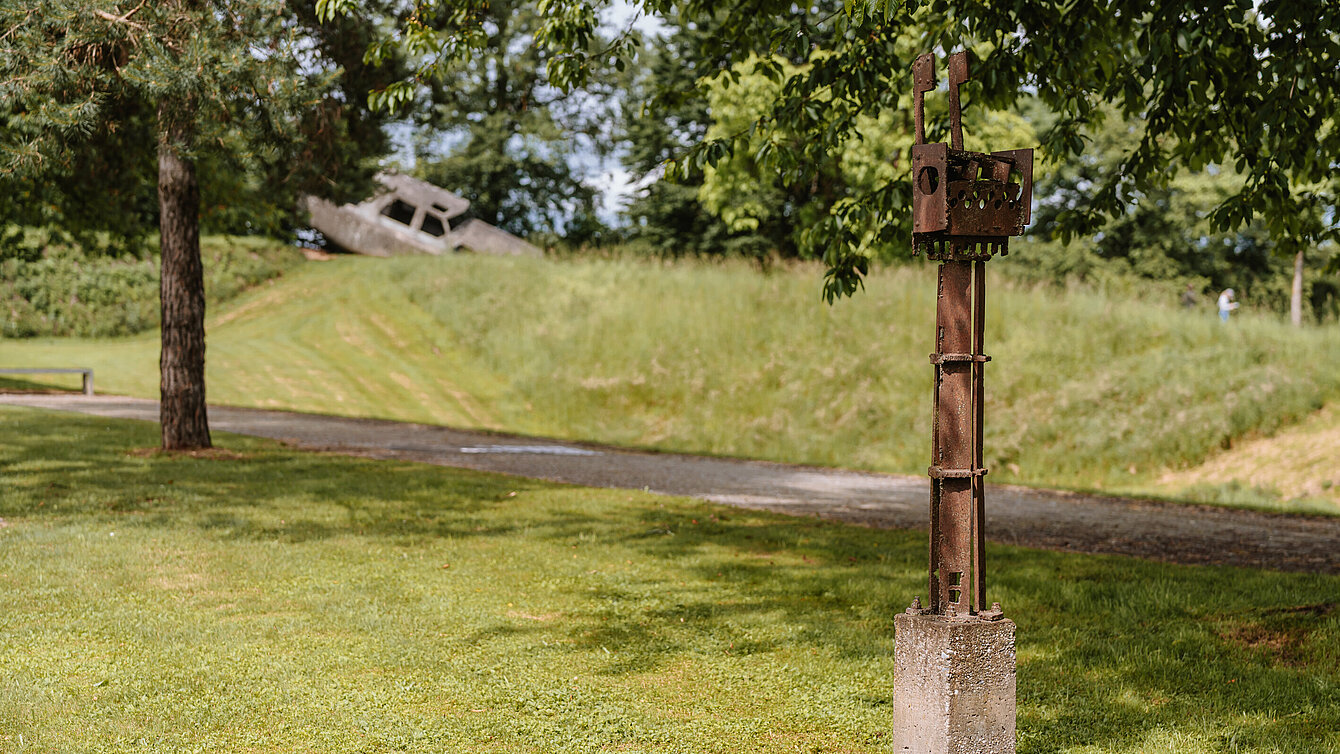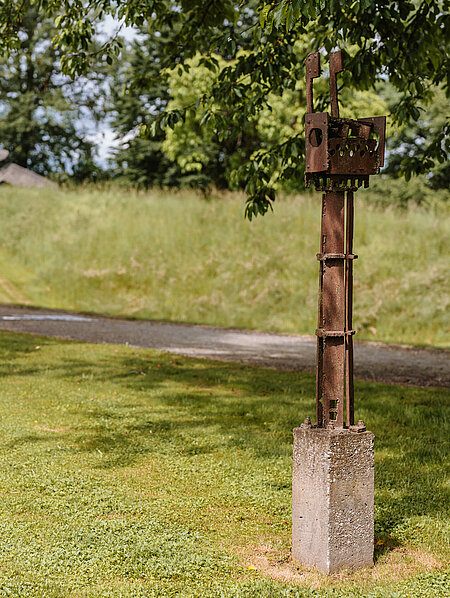This sculpture is one of Moswitzer’s oldest figurative images, which first appeared in his work around 1960 and occupied him for about two decades. Made from various iron parts, these early works are in a way reminiscent of idols, of the magical objects of cultic religious worship. The outlines of this work, for example, suggest the shape of a humanlike figure that seems to be divided into a torso and head. The mounting of the object on a disproportionately large stone base is intended to illustrate the indispensability of a plinth for classical sculpture.
Skulptur
Gerhardt Moswitzer, 1961


Image Credits
Author
Peter Peer
Location on map
Owner
Universalmuseum Joanneum
Artist biography
Show all
About the sculpture
In Gerhard Moswitzer’s long history of creativity, some very characteristic strands of work have become visible. One of them includes the group of figure images, which first turned up in his work around 1960. The artist occupied himself with them, with interruptions and in many different ways, for approximately two decades. However, we must be careful regarding the use of the concept “figure”, as it is more a matter of “quasi figure-related structures: all sorts of heads, busts and upright, standing figures”, as Otto Breicha remarked.
The 1961 sculpture is one of the oldest “figures”, but it already shows the main characteristics of this group of works. Firstly, Moswitzer works (mainly) with iron and all parts of these figures are put together or welded together from a multitude of various iron parts, bands, rods, slabs etc. In this example, it is a narrow construction on top of which he placed a cube-shaped structure, from which two longitudinal bands point vertically upwards and which protrude at their ends. The fact that the object is mounted on a stone base proves its debt to classical sculpture. The object itself is not that “classical”, despite the fact that its contours evoke a human shape, consisting of torso and head.
Like some of the artist’s earlier works, these too remind us of idols, magical objects of religious worship, similar to those we know from primitive peoples’ cultures. All these works show striking affinity with the sculpture of Surrealism, with Max Ernst or Picasso, one of the “forefathers” of modern iron sculpture. He, like many others, drew on the motifs of the primitive. Despite the lyrical contents of the objects giving way to a constructive strictness of form as the years pass, Moswitzer’s figures are always surrounded by this intrinsic aura.



















